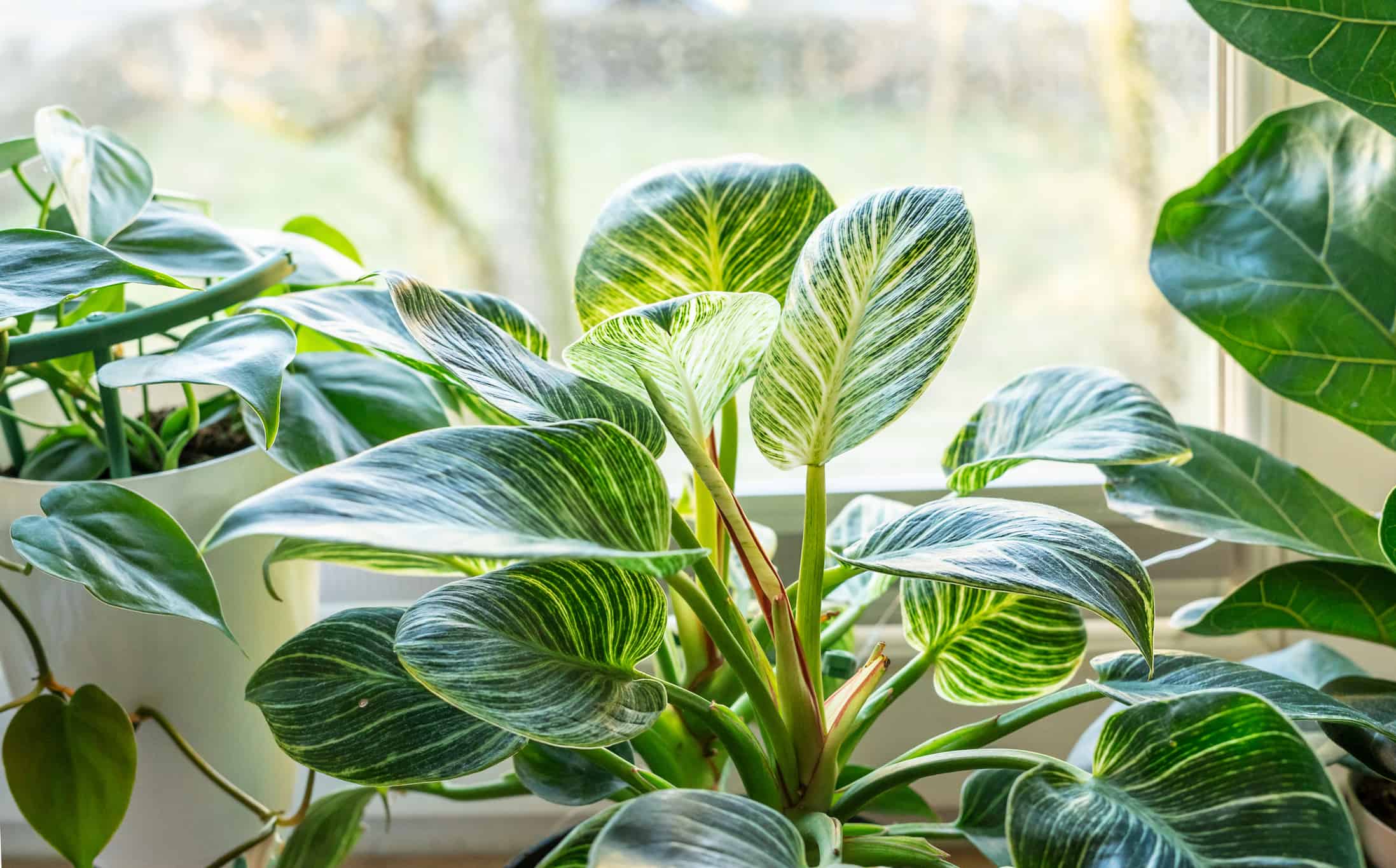Root rot is a type of plant disease typically caused by fungi or bacteria that attack the roots of a plant. It results in the roots becoming mushy and eventually rotting away. This can be a serious problem for houseplants, as it can lead to stunted growth and even death. Here are the 6 biggest root rot mistakes that plant parents make and how you can avoid them.
Symptoms of Root Rot

The mushy, brown roots of this plant are rotten from overwatering—the number one root rot mistake.
©Larisa Stefanuyk/iStock via Getty Images
One of the most common symptoms of root rot in houseplants is yellowing or wilting of the leaves. If you notice your plant is wilting even though the soil is moist, you have likely made one of the root rot mistakes. Plants with root rot are unable to uptake enough water and nutrients, leading to a slow decline in overall health. The roots may also appear black or brown and may be slimy or have an unpleasant smell when touched. In extreme cases, the plant may become completely wilted and show signs of severe shock. The roots will be soft and discolored and will start to disintegrate if left untreated. In some cases, the entire root system can be completely destroyed, leading to the death of the plant.
6 Biggest Root Rot Mistakes Plant Parents Make
Root rot is a problem that can arise from soil pathogens that damage the roots of a plant. In this article, we look at the five most common errors people make in relation to root rot and how they can be avoided.
#1 Biggest Root Rot Mistake—Over Watering
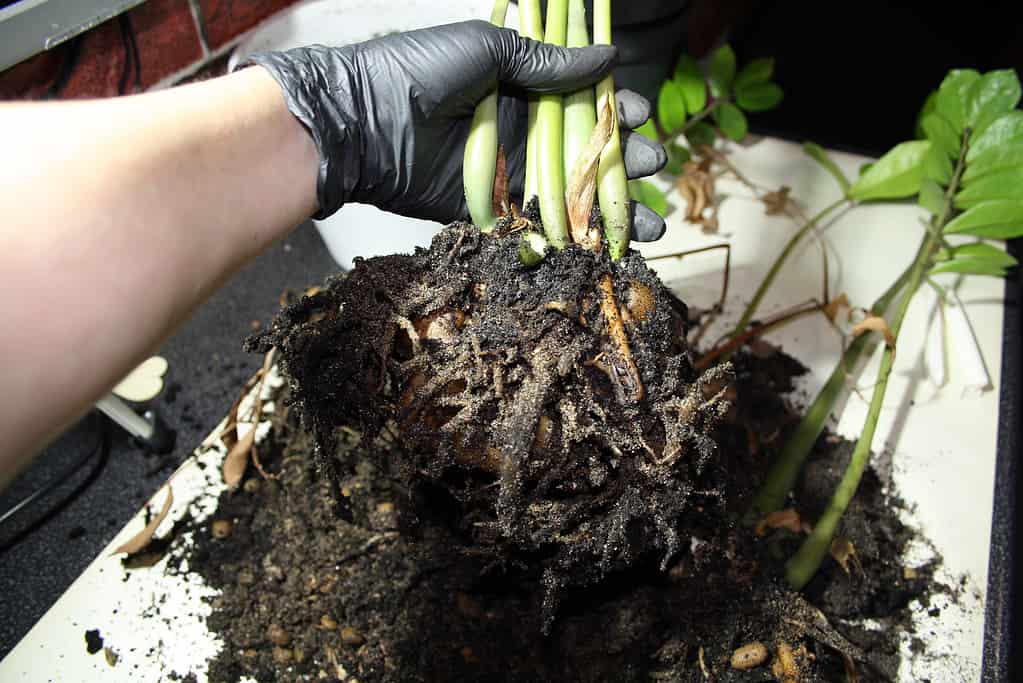
Providing too much moisture (killing with kindness) is the number one root rot mistake.
©Olga Yakovleva/iStock via Getty Images
Houseplant enthusiasts often make a big mistake when it comes to watering their plants: overwatering. It’s easy to think that more water is always better, but in reality, too much water can suffocate the roots of a plant, leading to root rot, wilting, and eventually the death of the plant. In fact, overwatering is the leading cause of death for houseplants.
It’s true that plants need water to survive, but it’s important to remember that they don’t need to be watered constantly. It’s better to give your plants a deep soak when they’re thirsty rather than a shallow sprinkle every day. Many people make the mistake of watering on a set schedule rather than when the plant is actually thirsty.
It’s also important to be aware of the signs of overwatering. If your plant’s leaves are wilting or turning yellow, it could be that the plant has been receiving too much water. Additionally, soggy soil or a foul smell can be signs that the plant the plant roots are rotting.
To avoid overwatering, it’s important to get to know your plant and its needs. Different plants have different water requirements, so research the specific needs of each individual plant. Additionally, always check the soil before watering to make sure that it’s sufficiently dry.
#2 Using the Wrong Soil for the Plant

The correct type of soil is crucial to a plant’s health. Never use outdoor soil in a houseplant.
©Reda.G/Shutterstock.com
Houseplant growers can make a big mistake when it comes to root rot – using poorly draining soil. Poorly draining soil can cause root rot, a serious problem that can kill a houseplant. When soil doesn’t drain properly, water accumulates and stagnates in the pot, leading to waterlogged soil. Fungi thrive in waterlogged soil and eat the roots of the plant.
Root rot can be prevented by ensuring that the soil you use is well-draining. It’s important to select the right type of soil for each plant. For example, succulent plants thrive in a soil-free cactus-type potting mix but are too wet in heavier soil mixes. Definitely do not use outdoor soil or garden compost for indoor plants.
It’s also necessary to check the soil regularly to make sure it’s not too wet. If it is, then you should move the pot to an area with better air circulation and let the soil dry out before watering again.
#3 A Pot With Poor Drainage
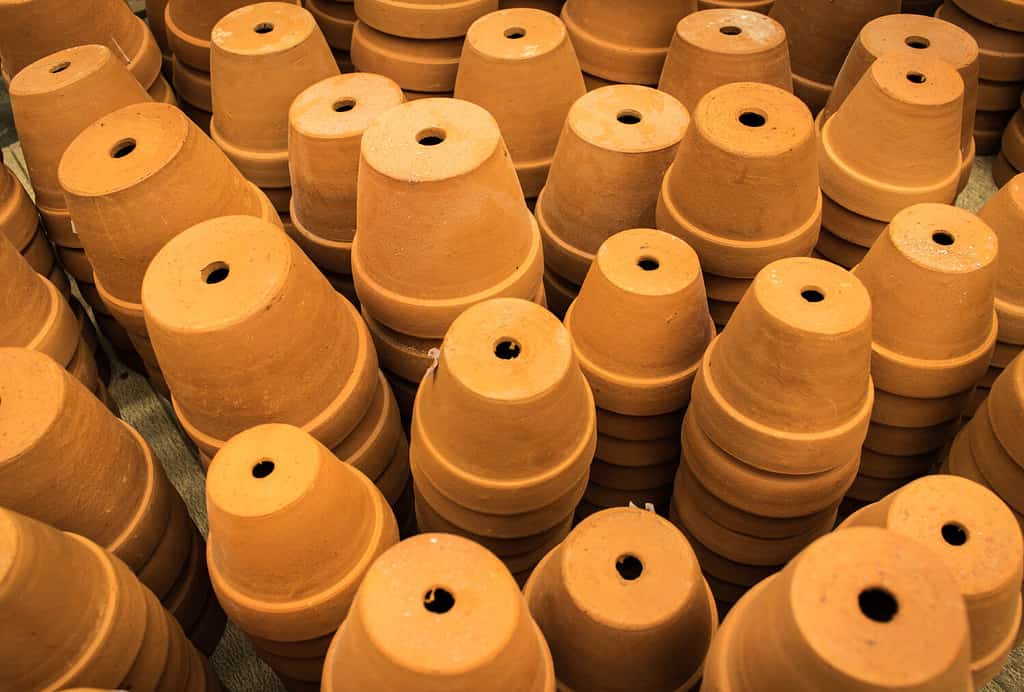
Using a plant pot that has little or no drainage is another common root rot mistake.
©Zulashai/Shutterstock.com
Houseplant lovers often make a deadly mistake when it comes to potting their plants: using a pot without proper drainage. Without proper drainage, the roots can become waterlogged and rot, leading to the demise of the plant. To ensure the plant’s best chance of survival, it’s important to use a pot with several drainage holes. This will allow excess water to escape, preventing the roots from becoming waterlogged.
An even better idea is to use a pot that allows for free-flowing oxygen around the entire root system. Orchid pots, root pruning pots, and unglazed terracotta pots do this. These types of pots are the most free-draining of all.
It’s also important to check the drainage holes regularly to make sure they’re not clogged and allow water to flow freely. If the drainage holes are clogged, use a sharp object to clear them.
#4 Not Considering Air Flow
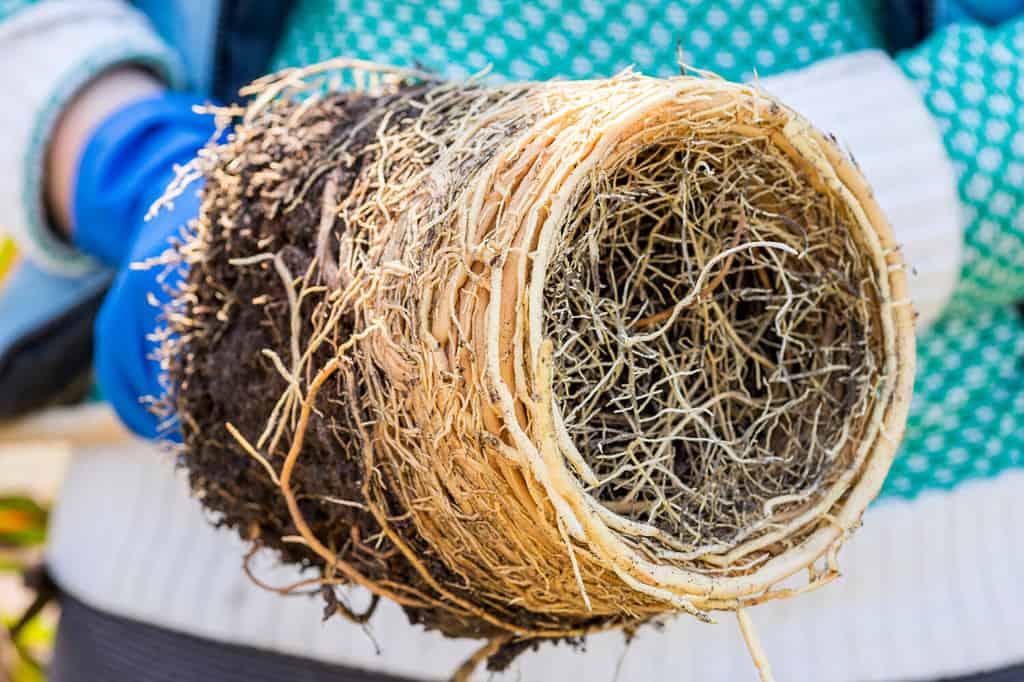
Did you know that it is not normal for roots to grow in a circle? They do this when starved for oxygen or rootbound.
©Andrii Spy_k/Shutterstock.com
Starving a houseplant’s roots of oxygen is one of the fastest ways to cause root rot. Without the necessary intake of oxygen, the roots cannot adequately absorb nutrients from the soil, leading to a decline in the plant’s overall health. The consequences of root rot can be severe, from wilted leaves and discoloration to stunted growth and possible death. To prevent this, it is important to guarantee that a houseplant’s roots are receiving enough oxygen by providing proper drainage and aeration.
Several different types of fungi can cause root rot. Common offenders include Rhizoctonia solani, Fusarium spp., and Phytophthora spp. These fungal spores will remain dormant in the soil and will not cause any issues until they are exposed to a moist environment for an extended period of time. This is why well-oxygenated roots and appropriate airflow are so important.
Potting containers with exceptional airflow promote root growth and root branching. These healthy roots will fill the pot and improve the plant’s capacity to take up nutrients and water. This prevents roots from growing in a circle and eliminates root rot entirely.
#5 Unhygienic Gardening Practices

Disinfect your gloves, trowels, shovels, and pots. Root rot fungi can spread from plant to plant.
©Michkasova Elena/Shutterstock.com
New houseplant growers often make the mistake of neglecting to practice hygienic gardening when indoors, which can lead to the spread of root rot bacteria. This bacteria can quickly damage plants and negatively affect the indoor environment.
Fungal spores responsible for root rot can easily spread from one plant to another through soil or water. To prevent the spread of bacteria, it is important to quarantine any plants with root rot and not reuse the drained water from plants to water other plants.
All shovels, pots, and pruners should be washed before and after use, and sterilized potting soil should be used for indoor plants. Additionally, it is important to remember that root rot bacteria thrive in warm, moist environments – the same environments that help tropical houseplants flourish.
#6 Using A Pot That is Too Big
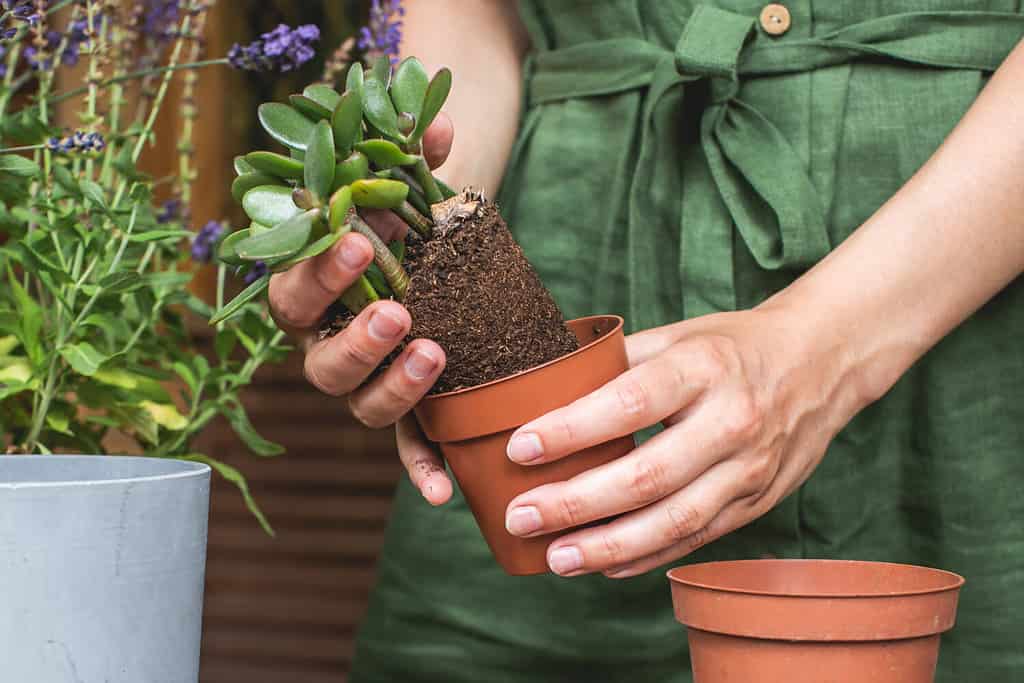
Choose a container that is only two inches bigger than the root ball of the plant.
©Krichevtseva/Shutterstock.com
Planting a houseplant in a pot that is too large is a recipe for root rot due to the fact that the tiny roots do not fill the pot, and the excess amount of soil retains too much moisture. This can cause the roots to become over-saturated, leading to root rot.
When a houseplant is planted in a pot that is too large, the soil will remain damp for longer periods of time, which increases the risk of root rot. This is especially true in the case of potted plants that are not placed in direct sunlight or have limited air circulation. The best solution to prevent root rot is to use a pot that is the correct size for the plant.
How to Save a Plant From Root Rot
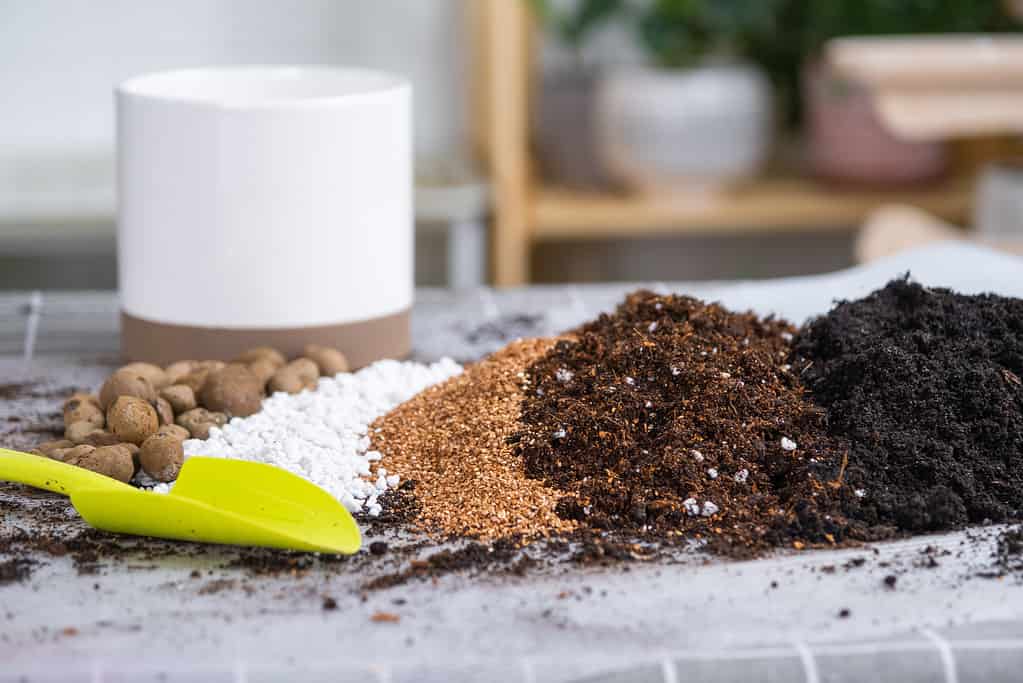
Use ingredients that encourage draining to prevent root rot in your houseplants.
©Ольга Симонова/iStock via Getty Images
If you notice one of your houseplants has rotten or soggy roots, there are steps you can take to save it.
- Remove the plant from its pot and inspect the roots. If they are mushy or black, those are signs of root rot.
- Healthy roots are firm and white or green. Do not cut these.
- Cut away any rotten or dead roots with a sharp, sterile knife.
- This is the perfect time to dip the healthy roots in rooting hormone to help the plant recover faster.
- Discard the soil and take the time to thoroughly disinfect the pot and your hands. This will minimize the spread of root rot fungi.
- Repot the plant in a pot with new soil. Choose a pot that has drainage holes and use well-draining potting soil. You can increase the drainage of potting mixes by adding pumice, sand, or perlite.
- Place the plant in a location that has the perfect sunlight requirements for the plant type.
- Water the plant only when it needs water. Do not water on a schedule. Feel the plant’s soil and make sure it is thirsty before watering. Remember that if the top of the soil is dry, there may still be water near the bottom of the pot. When in doubt, wait.
- Monitor the plant closely for signs of improved health. If the plant shows no signs of improvement within a few weeks, you may need to discard it.
Thank you for reading! Have some feedback for us? Contact the AZ Animals editorial team.

